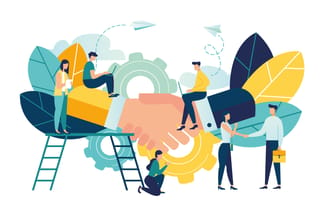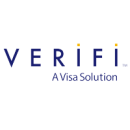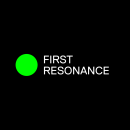Sunny Chalam has given the same piece of advice to every product manager he’s mentored over the years: “Your relationship with engineering, specifically your engineering lead, is the most important professional relationship you have.”
That’s because product managers would be out of a role without their engineering partners—and vice versa.
“Product thinking is obviously critical in shaping a company, but there wouldn’t be a product in the first place without our engineering partners,” said Chalam, who is head of product at First Resonance.
Building and maintaining the professional relationship between these two key product players requires efforts similar to how we nurture our ties with friends and loved ones.
“The key ingredients are the basics of all successful relationships: trust, respect and communication,” said Maricela Jimenez, senior product manager at Verifi.
There’s a lot of reasons why Jimenez, Chalam and other product managers value these ingredients, but all express that the communication factor is paramount. It ensures that both teams remain aligned on the product vision and requirements and they set clear expectations for one another. The flow of information between the two departments helps engineers to resolve issues and address feedback from users, reduce tech debt and increase efficiency in development and launch.
“Having an open communication channel with engineering and providing the right level of information ensures engineers can make the right design and development decisions,” Jimenez said.
Jimenez, Chalam and three other product leaders sat down with Built In LA to share how their product and engineering teams work together and the strategies that help them strengthen that relationship.
Tinder is the most popular dating app in the world. In 10 years, it’s grown from one language in one country to being available in 45+ languages in 190 countries around the world, with more than 530 million downloads as of 2022.
As a product manager, what are the key ingredients for a successful relationship with your engineering team?
A good relationship between product and engineering relies on clear, timely communication and a willingness to consider problems from each other’s points of view. The relationship could break down when engineers don’t know what or why they should work on something. They could feel like they don’t have any influence over product specifications, team goals or big deadlines. Product managers should get ahead of these issues and invite engineers into brainstorming sessions, set expectations, provide transparency about requirements from leadership or other stakeholders and allow engineers to provide feedback.
Product managers should also build time into their roadmap for engineering initiatives to reduce tech debt and increase efficiency. Product managers frequently overlook these initiatives, but they’re essential to engineers. They can still impact KPIs by making the product faster and less buggy and reduce the effort required to ship future projects.
Describe how Tinder’s product and engineering teams intersect. How does this organizational structure help build the relationship between the two?
Product managers have weekly one-on-ones with the engineering managers from each pod, and they meet with individual engineers based on their projects. We come together to share updates at our cross-functional standup on Monday mornings, and we review new projects and demo features in development and discuss test results during team office hours on Thursday afternoons.
This structure allows engineers to focus on their area of expertise while product managers set product requirements and manage project timelines. Several formal and informal touch points throughout the week create opportunities to share new information and potential concerns, which ensures we are consistently on the same page about progress, priorities and goals.
Engineers buy into projects when they know their work will make a difference.”
What communication strategies do you use to ensure engineers share your product vision?
Our engineers are passionate about working on a product that creates a connection; on the revenue team, we’re energized by drawing a line from the features we’re building to growth for Tinder’s bottom line. Engineers buy into projects when they know their work will make a difference.
When I share my product vision with engineers, I consider what motivates the engineering team and lean into that to create a compelling case for our roadmap. I use data to create a narrative about how we’re improving the user experience and growing revenue. When we kicked off development for a feature we’re currently working on, I highlighted a startling pain point for a large user segment. I then described how this new feature will address the problem for non-paying users and how we plan to drive growth for more robust solutions.
Virtualitics is an advanced analytics company that provides ready-to-use AI that’s easy to understand. The platform helps organizations quickly turn complex data into visualizations and predict future business outcomes.
What are the key ingredients for a successful relationship with your engineering team?
Communication is key. Open and regular communication ensures we resolve ambiguity and address feedback as soon as possible so that everyone is confident that we are moving in the right direction together. It is also important to lay out clear expectations, both in terms of implementation details for a new feature and an individual’s more general responsibilities and processes.
Having a technical background helps us to speak the language of our engineers and assist with troubleshooting when necessary. Because of the close working relationships with our engineers, we have all developed a strong, bidirectional sense of trust. This leads to productive working sessions where we brainstorm solutions and discuss benefits and concerns for different development options. Then I can put on my revenue hat and represent the needs of that side of the business to keep us grounded in what really matters. Representing both the technical and non-technical teams in different situations is very important for building trust with both groups.
Describe how Virtualitics’ product and engineering teams intersect. How does this organizational structure help build the relationship between the two?
As a product manager at a very lean startup, I am responsible for managing a wide range of activities, from strategic roadmap planning to tactical JIRA task prioritization. None of these decisions are made alone: I work with our engineering leads so we maintain constant alignment in our efforts and vision.
Each of our several products has an engineering lead. The product team works with the engineering leads throughout the week, and we discuss any urgent items that require a group decision and set aside time to make progress on our longer-term objectives; finding that balance is always a challenge.
I think of the intersection of our product team and engineering leads as another team itself that is responsible for a lot of the day-to-day and week-to-week product decisions. We all share some product responsibilities, and spending so much time working together on important responsibilities has brought us closer as coworkers and as friends. We trust each other to fill in when one of us is unavailable, and we are always looking out for each other.
I think of the intersection of our product team and engineering leads as another team itself that is responsible for a lot of the product decisions.”
What communication strategies do you use to ensure engineers share your product vision?
Broadly speaking, before we share our strategic vision with the engineering team, we make sure that the vision itself was developed through collaboration with our engineering leads. When sharing the product vision with the entire engineering team, it’s important to tailor the message to individuals. Different engineers have different communication styles, and adapting how we deliver our messages helps to achieve buy-in from our engineers.
To communicate more tactically about product vision, we use product requirement documents that we build collaboratively with developers, designers and solutions engineers to lay out the requirements for new functionalities. We capture notes from breakout sessions and then turn those into user stories, key decisions and other tidbits of useful information that engineers reference while building these features and quality assurance references while testing them. These have become a staple of our process and are very powerful for alignment.
Verifi offers end-to-end payment protection and management solutions for e-commerce companies.
As a product manager, what are the key ingredients for a successful relationship with your engineering team?
There are times where changes are required, so being open and flexible to design options is important. Trust is built over time by working closely with the engineering team and managers, answering their questions, being open and honest, and admitting when I don’t know the answer or have made a mistake. If I don’t know an answer, I do the research to get the answers they need so they can move forward and we can both be successful in meeting our commitments and delivering value to the business.
Utilizing the responsible, accountable, communicate, inform communication model is important.”
Describe how Verifi’s product and engineering teams intersect. How does this organizational structure help build the relationship between the two?
The product and engineering teams are intertwined in delivering products and solutions. The product team describes the “what” and the engineering team the “how.” Each team has a critical role to support the entire product lifecycle: ideation, approval, scheduling, implementation and launch. During the ideation stage, the product team identifies the opportunity, develops roadmaps and works with engineering on high-level solutions. This enables the engineering team to provide high-level estimates, which are inputs to the approval process. If approved, the product team defines the detailed requirements so the solution can be jointly groomed and sized for scheduling and resourcing. During implementation, the product team provides priorities, and answers ongoing questions to support engineering in solution development, and finally, solution acceptance for launch.
What communication strategies do you use to ensure engineers share your product vision?
Our communication strategy is multi-pronged; it includes communication methods like standups, regularly scheduled meetings and chats throughout the product development lifecycle. Having clearly documented roles and responsibilities, or utilizing the responsible, accountable, communicate, inform communication model is important. My team is primarily involved in the first half of the product cycle with key input from engineering, and engineering is primarily responsible for the second half of the lifecycle with key input from the product. The combination of established and impromptu meetings to iron out issues that arise is imperative.
First Resonance’s manufacturing software platform, ion, is a factory operating system that accelerates manufacturing and tracks the process from prototype to production.
As a product manager, what are the key ingredients for a successful relationship with your engineering team?
The key to creating a successful relationship starts by always taking the time to communicate the vision of what it is that you’re trying to build for the user. I see product managers work very hard at defining that for other functions like sales and marketing but then spend all their time with engineering detailing the work for the next sprint. Painting the picture for engineering opens the door to collaborative problem solving and often leads to better outcomes as engineers often bring solutions that are out of the box. Another key way to strengthen that relationship is to aggressively share credit for launching a product at every turn. Promoting the contributions of the engineering team and including engineers when presenting to senior leadership are great ways to show gratitude.
Painting the picture for engineering opens the door to collaborative problem solving and often leads to better outcomes — engineers often bring solutions that are out of the box.”
Describe how First Resonance’s product and engineering teams intersect. How does this organizational structure help build the relationship between the two?
We recently re-organized ourselves into pods that correspond to different areas of our broader application. The new organizational structure gives both product and engineering a great deal of focus and a clear sense of priority on what the biggest user problems to focus on are. The new framework also enables clear lines of decision making, which is extremely healthy for the organization because it allows the product team to focus on user and business outcomes. It also allows the engineers within each pod to look at the product architecture in specific areas and make calls on technical upgrades and burn down tech debt, which is essential to scale our infrastructure. The structure within an organization can change based on many factors, but it’s critical you choose a structure that creates focus, clarity, and clear lines of decision making for each individual within it.
What communication strategies do you use to ensure engineers share your product vision?
I believe a key building block in communicating any vision is to develop deep empathy with our users. In B2B software, that isn’t always easy if you don’t come from the industry your product is trying to serve. I actively encourage our engineers to go on customer visits and see the pain points our users face. Once those have been established, it’s a matter of envisioning what that user’s life would be like once the product that you’re all working on together meets its goal. A key characteristic of a great product manager is being a great storyteller; articulating the difference you want to make in the life of that user is a great way to start. It’s important to check in monthly or quarterly to reflect on the progress you’ve made toward that, and sharing customer stories is a very impactful way to do that. Showing engineers that the code they’re writing, reviewing and testing isn't just going into a codebase but is instead making a difference in real people’s lives can really bind a team together with common purpose. That’s when great products get built.
Repeat is a SaaS platform that enables consumer packaged goods brands to turn one-time buyers into repeat customers. Its Smart Replenishment software learns customers’ consumption habits and uses that data to drive repeat sales.
As a product manager, what are the key ingredients for a successful relationship with your engineering team?
Communication, empathy and building trust are the key ingredients. It’s important to funnel context and learnings I get from other departments and customers into engineering. It’s also essential to communicate with engineering to understand the systems and technical challenges and collaborate on solutions.
Building trust and having clear lines of responsibilities are valuable, too. When we talk through what we’re building, it’s important to align on the problem and solution but to leave the implementation details up to engineering, know where the team’s expertise lies and trust their decisions and inputs.
Describe how Repeat’s product and engineering teams intersect. How does this organizational structure help build the relationship between the two?
Product and engineering are interwoven here. Because we are at an early stage and like to move fast, it’s extremely important that product and engineering are always in alignment. When we’re aligned, we’re a lot more efficient with our time, which allows people to work in the way that works best for them and provides more space for innovation and collaboration.
It’s important for product and engineering to be aligned on what we are trying to solve — the ‘why’ behind what we’re building.”
What communication strategies do you use to ensure engineers share your product vision?
It’s important for product and engineering to be aligned on what we are trying to solve — the “why” behind what we’re building. I’ve found most miscommunications are due to a misalignment on something deeper that might not have been conveyed, so it’s really important to always get on the same page at the foundation.
We’re very intentional with setting the alignment before we start on any projects, and check in when things might have changed. We hold kick-off meetings for each work-stream that include product, engineering and any other relevant stakeholders. We review the problem we are setting out to solve, why it’s important to our users, and why it is important to us now as a business. This prevents building in silos, and the extra context provided encourages more curiosity about the problem space.















